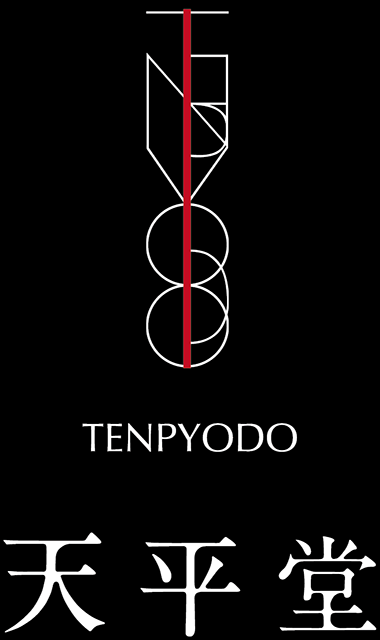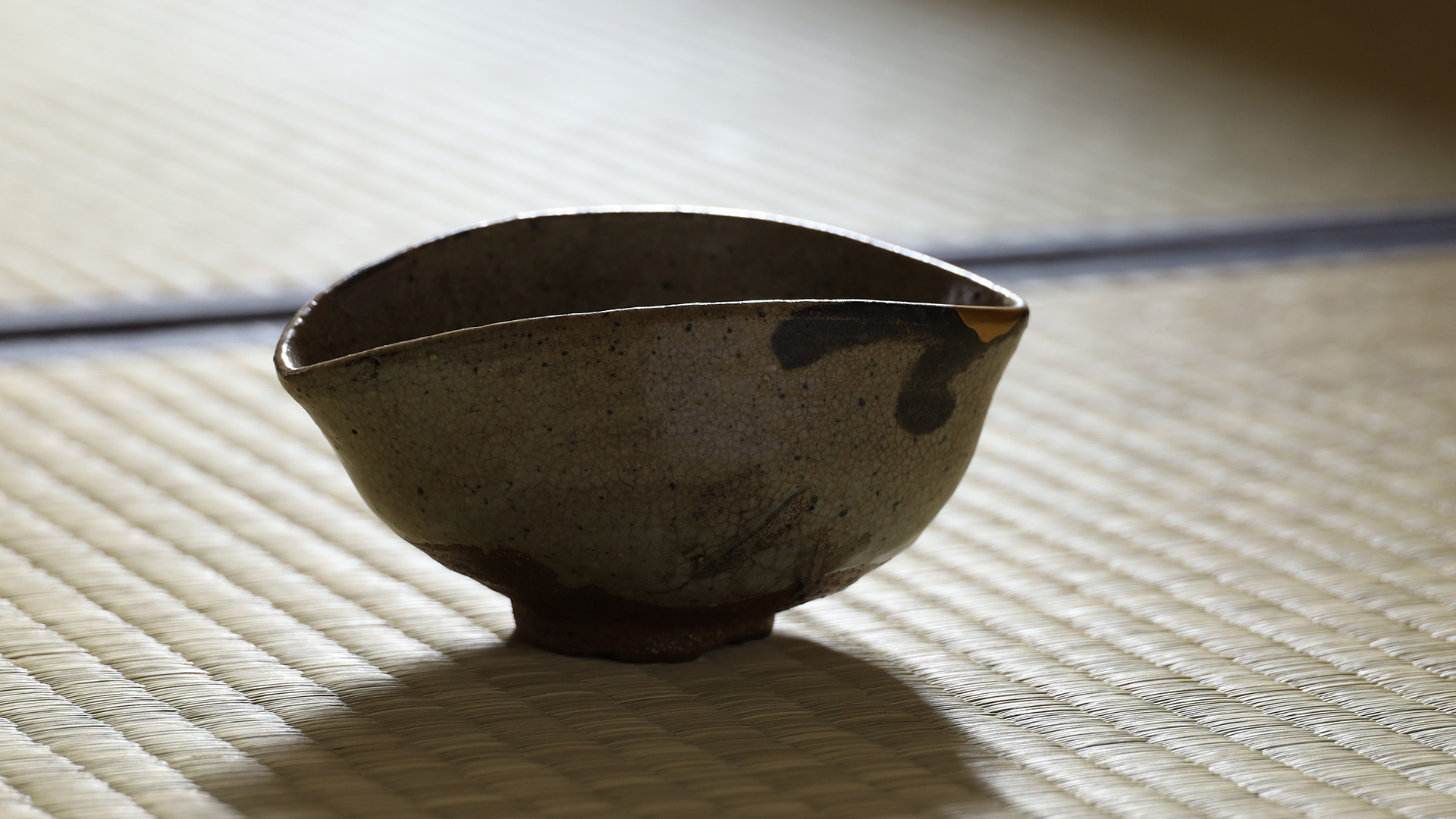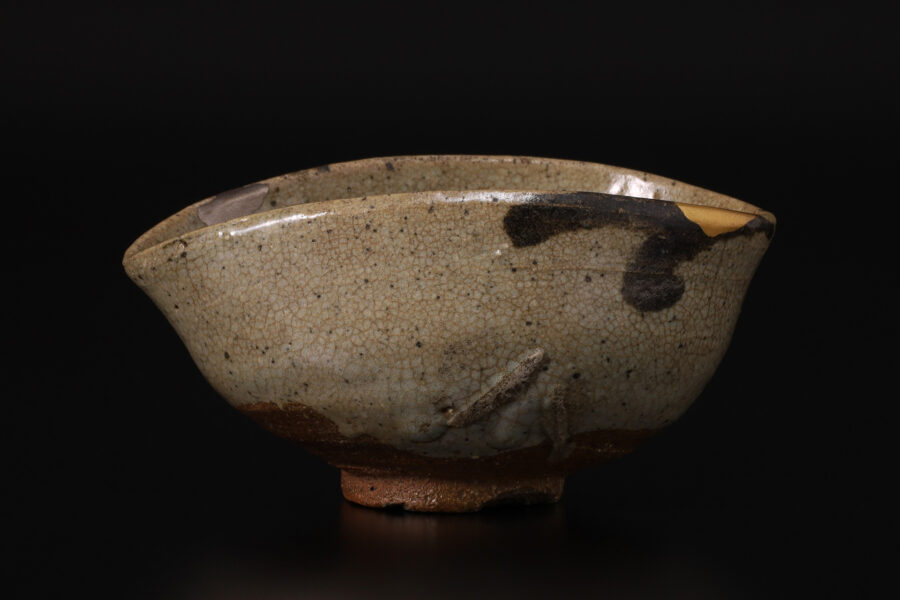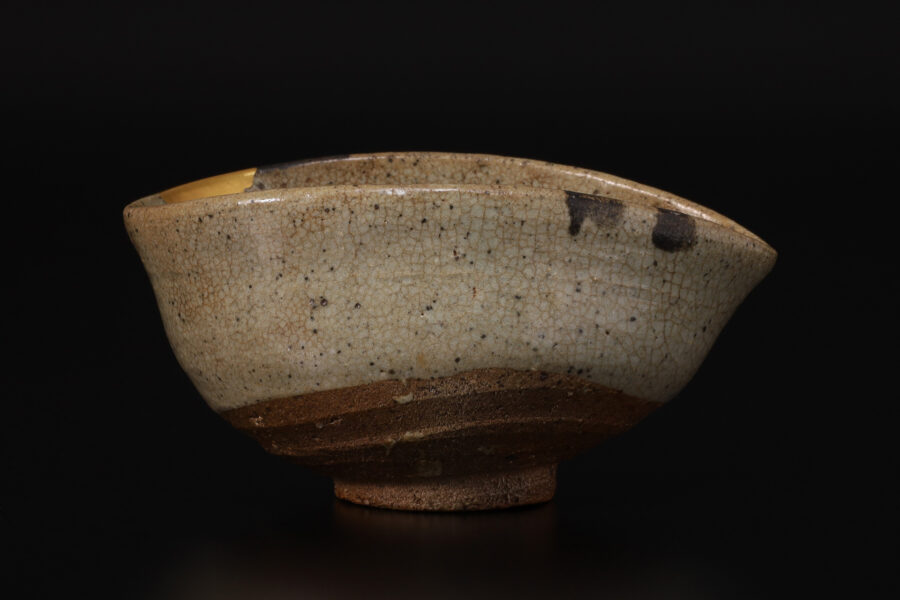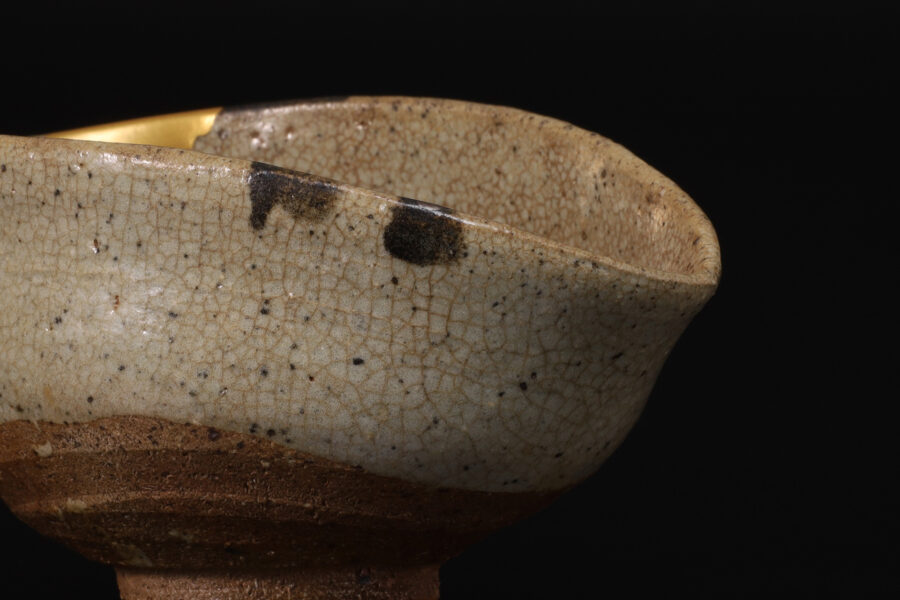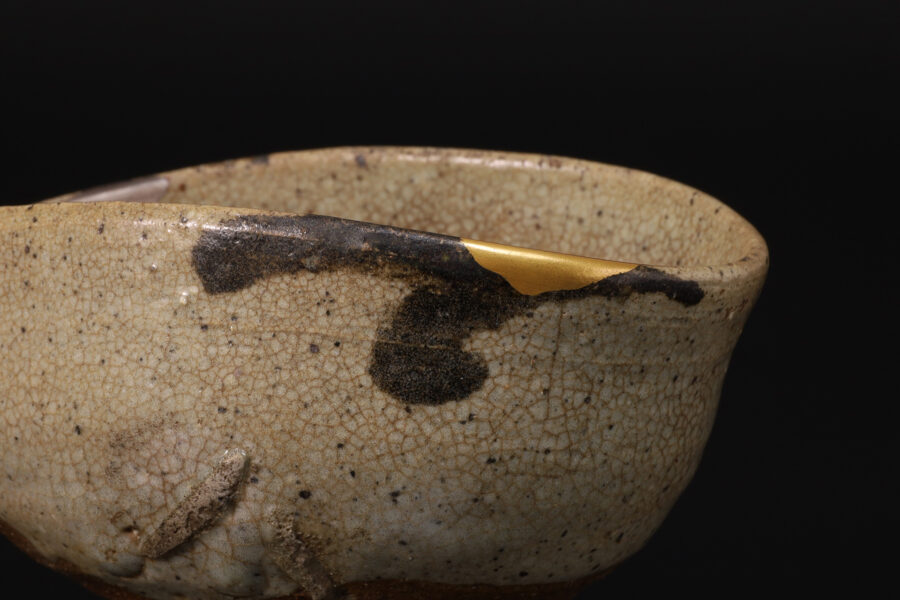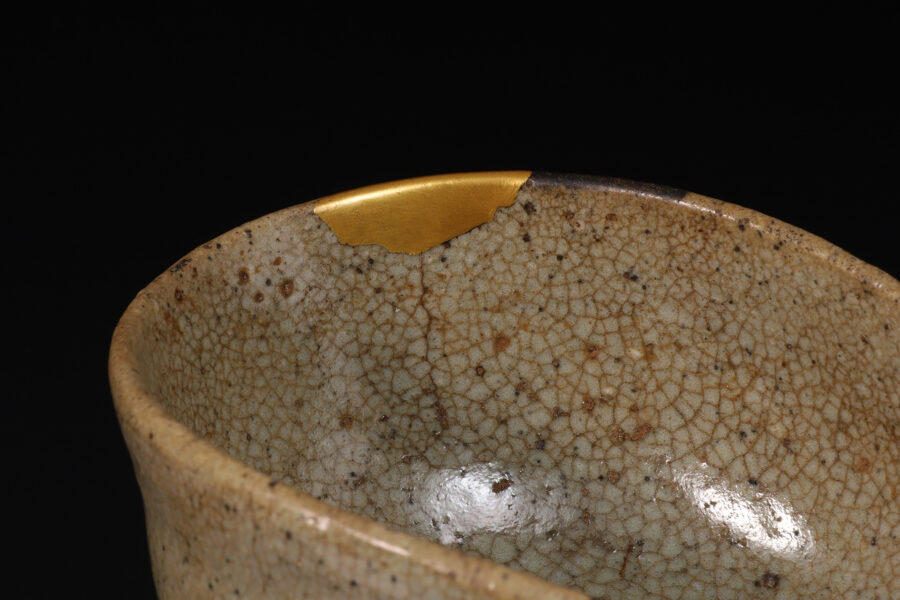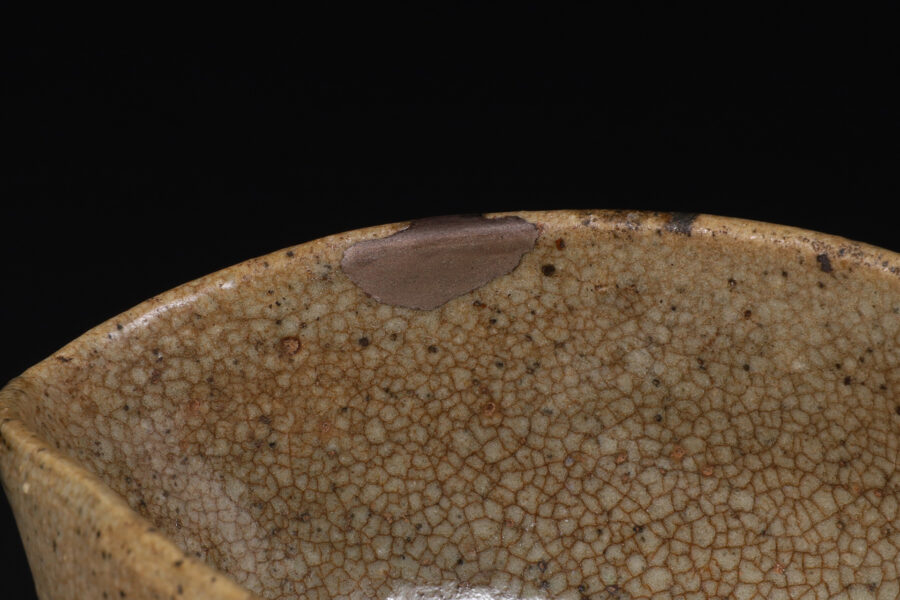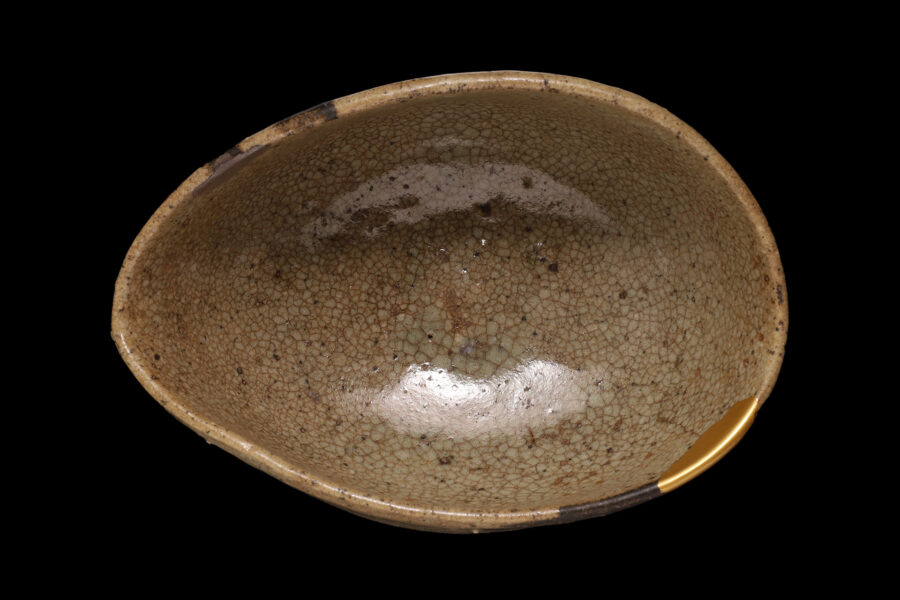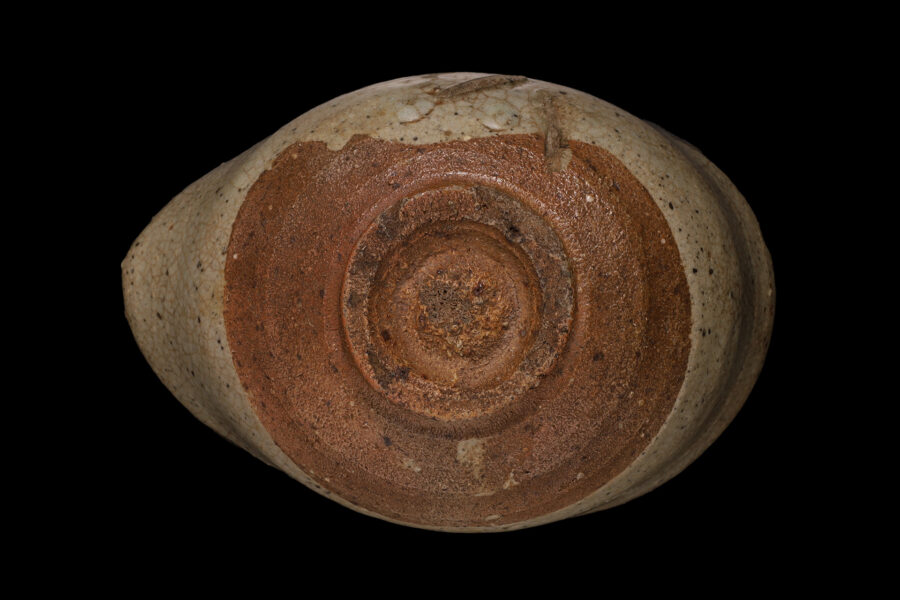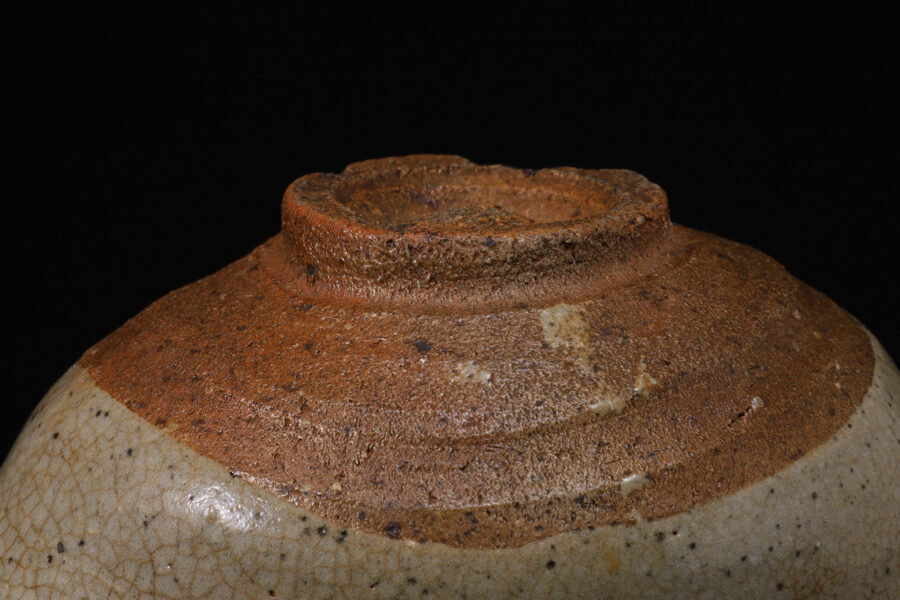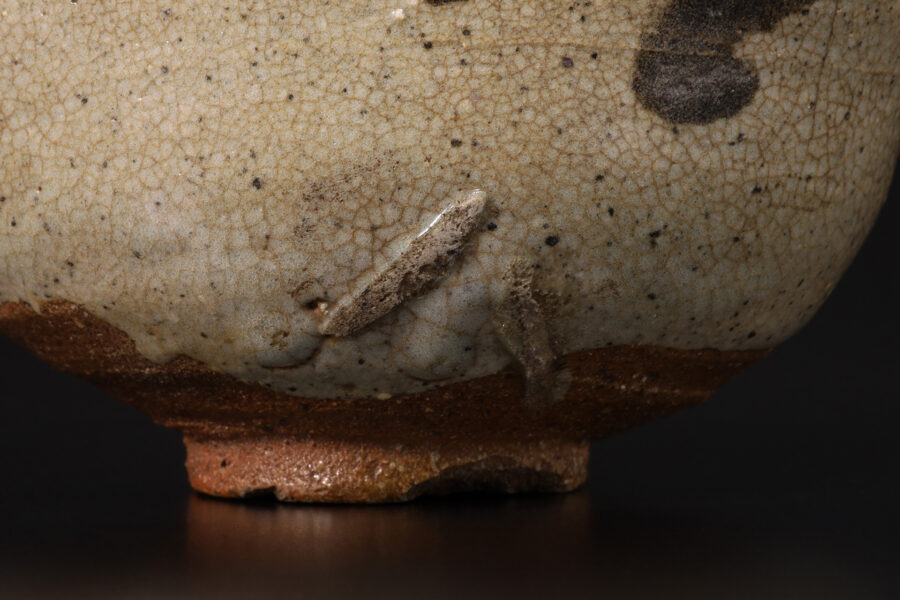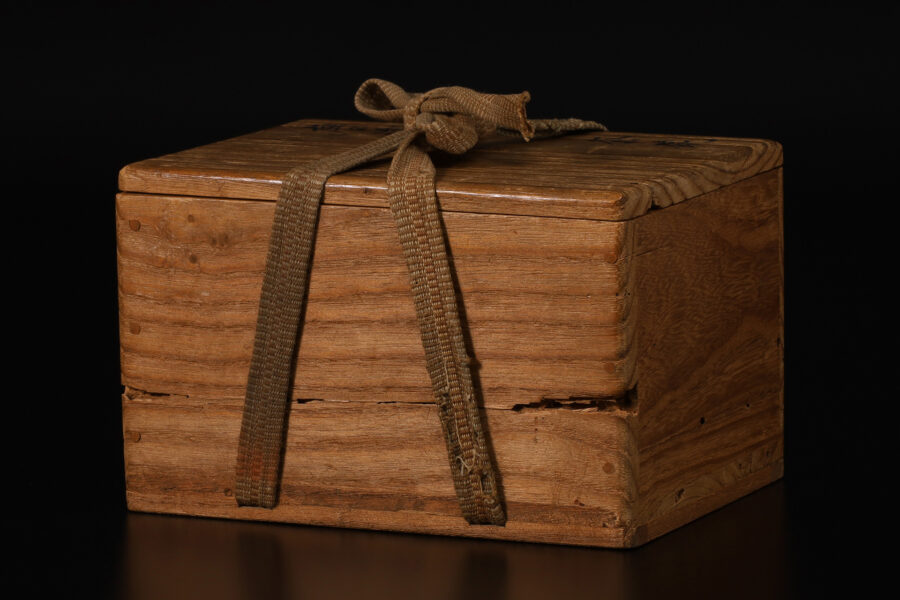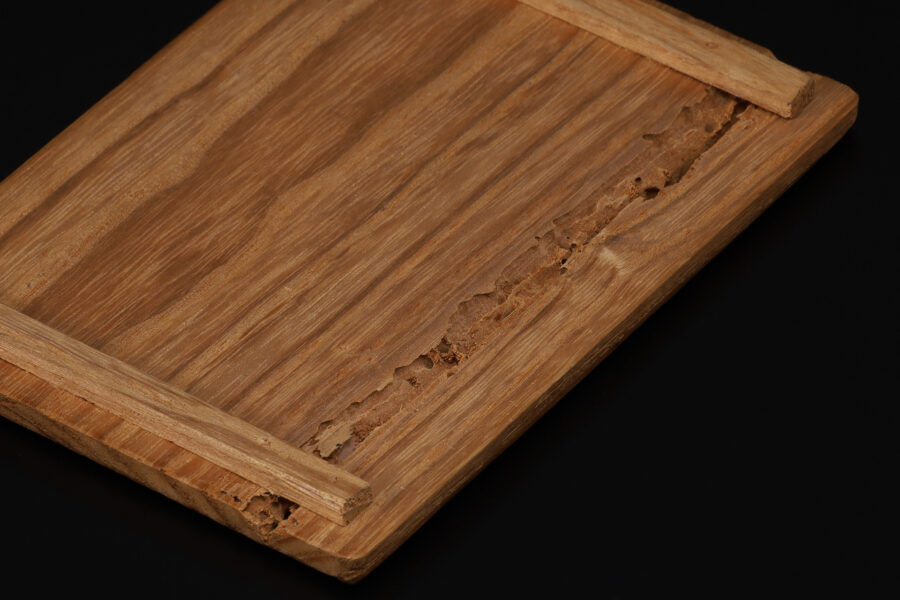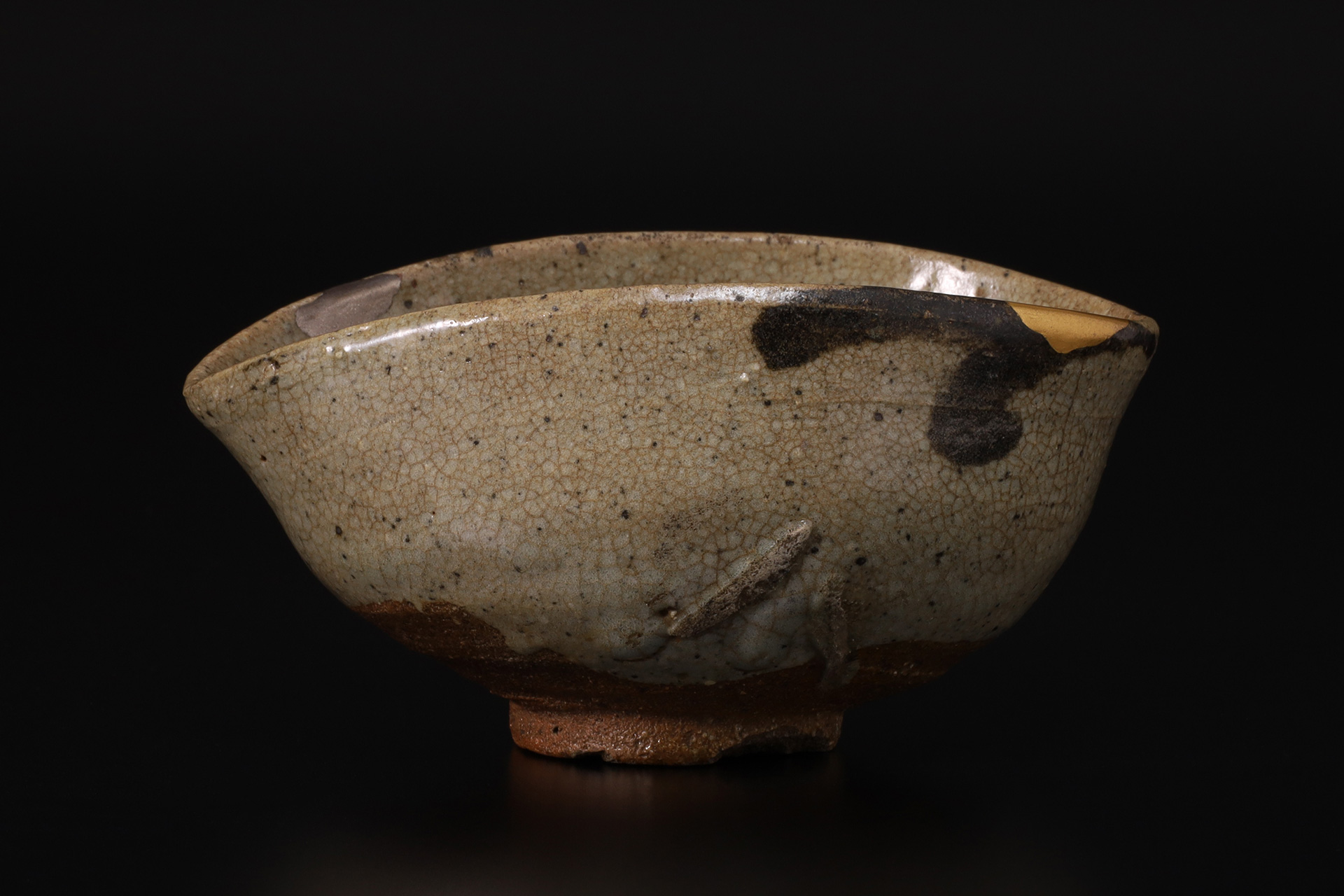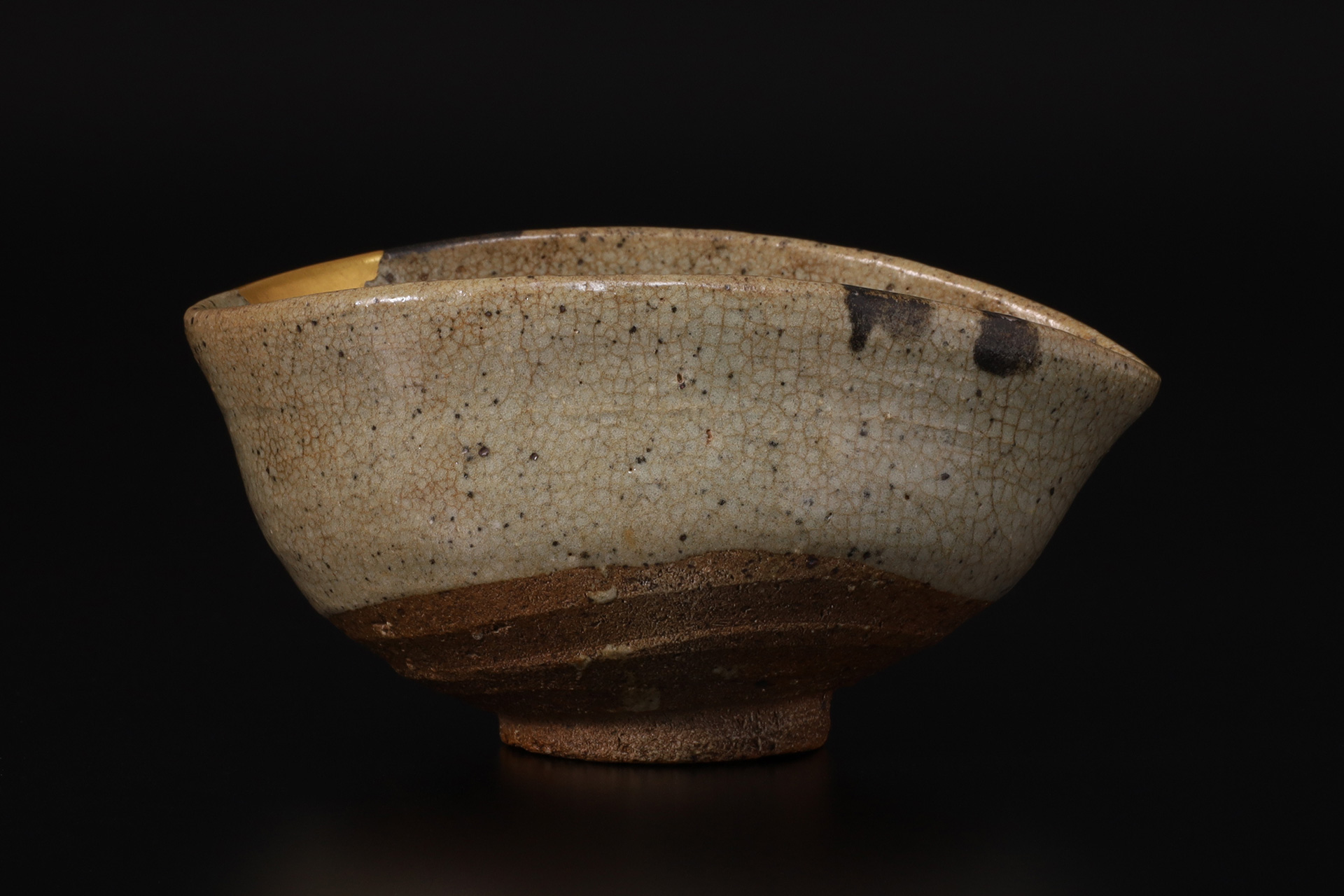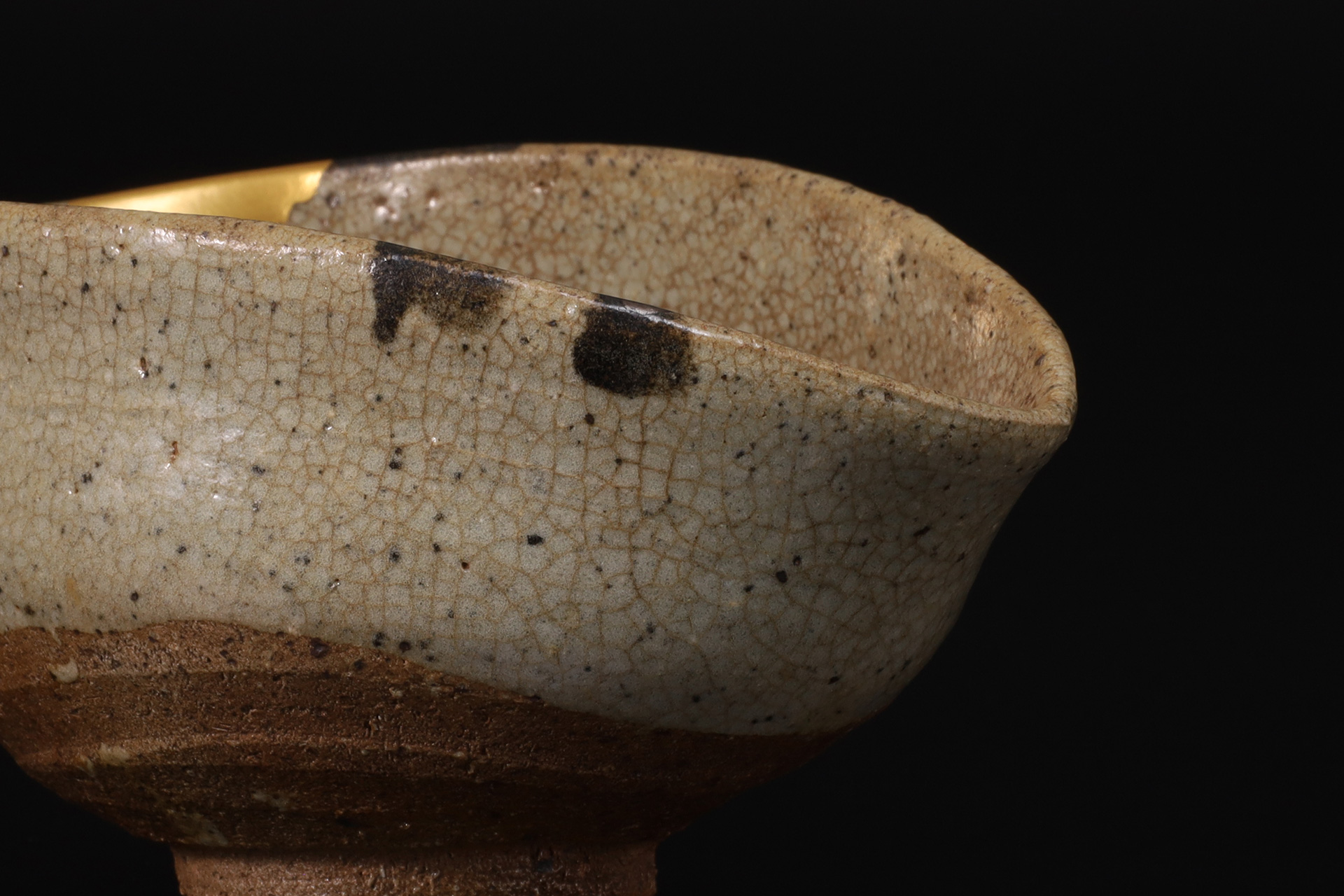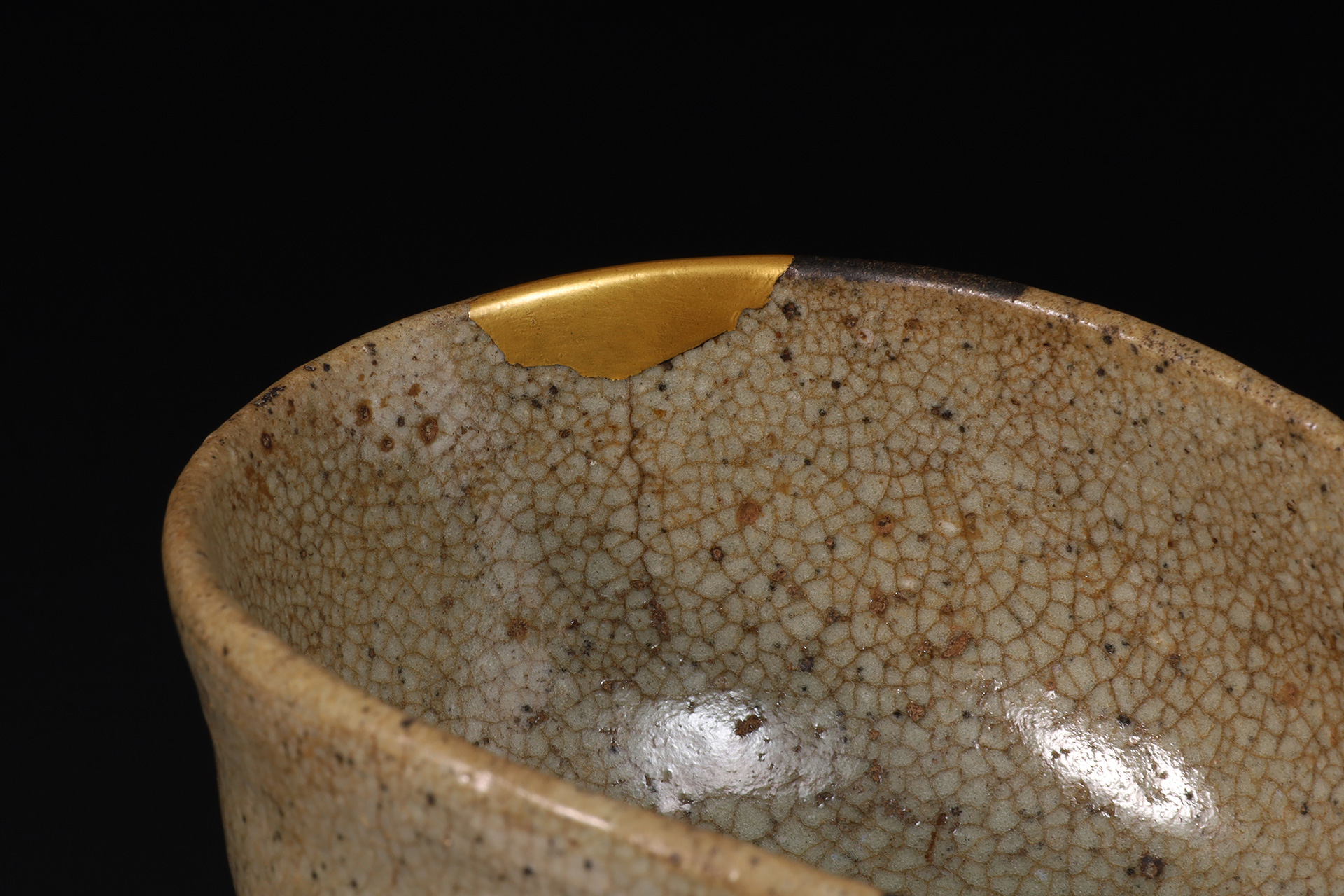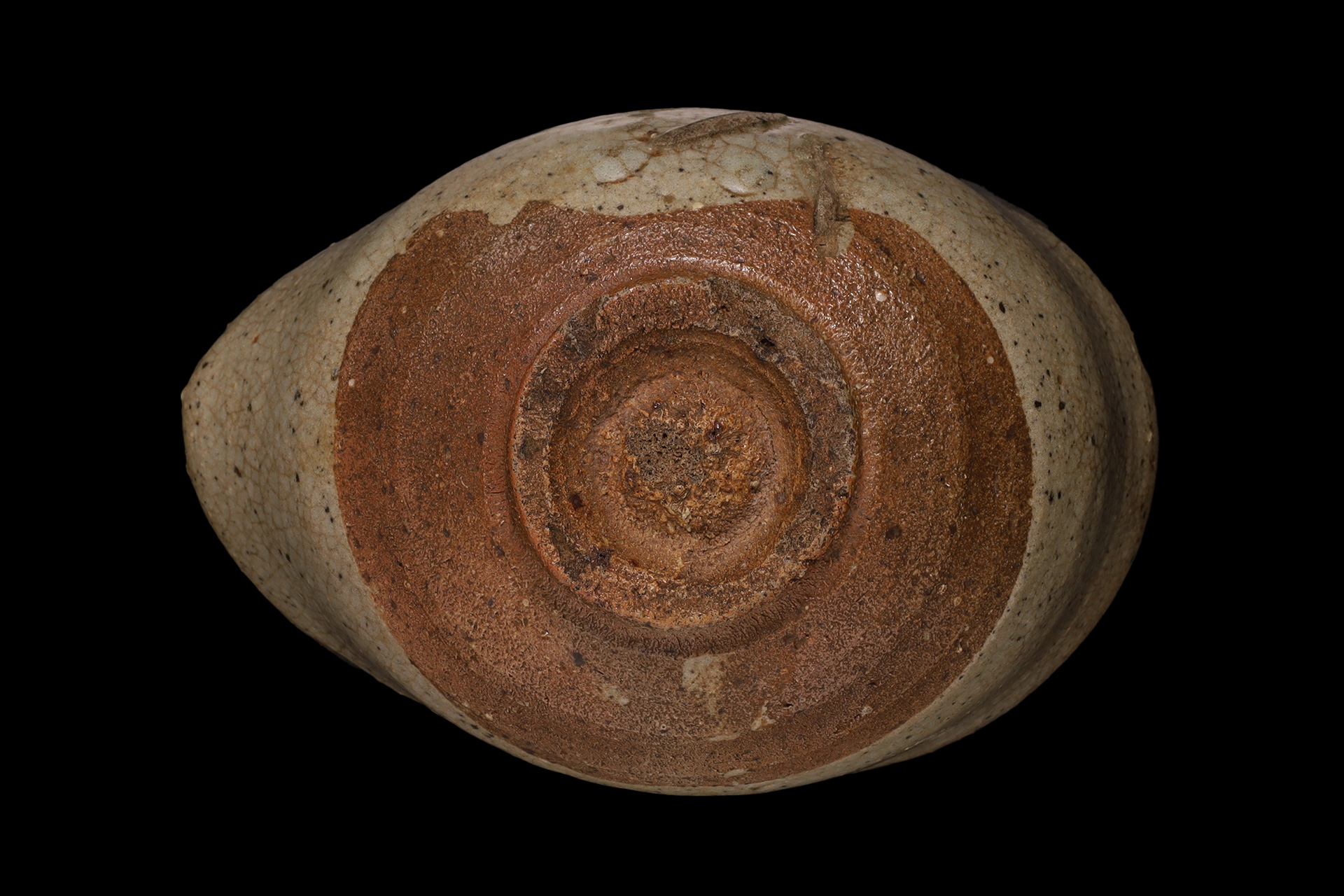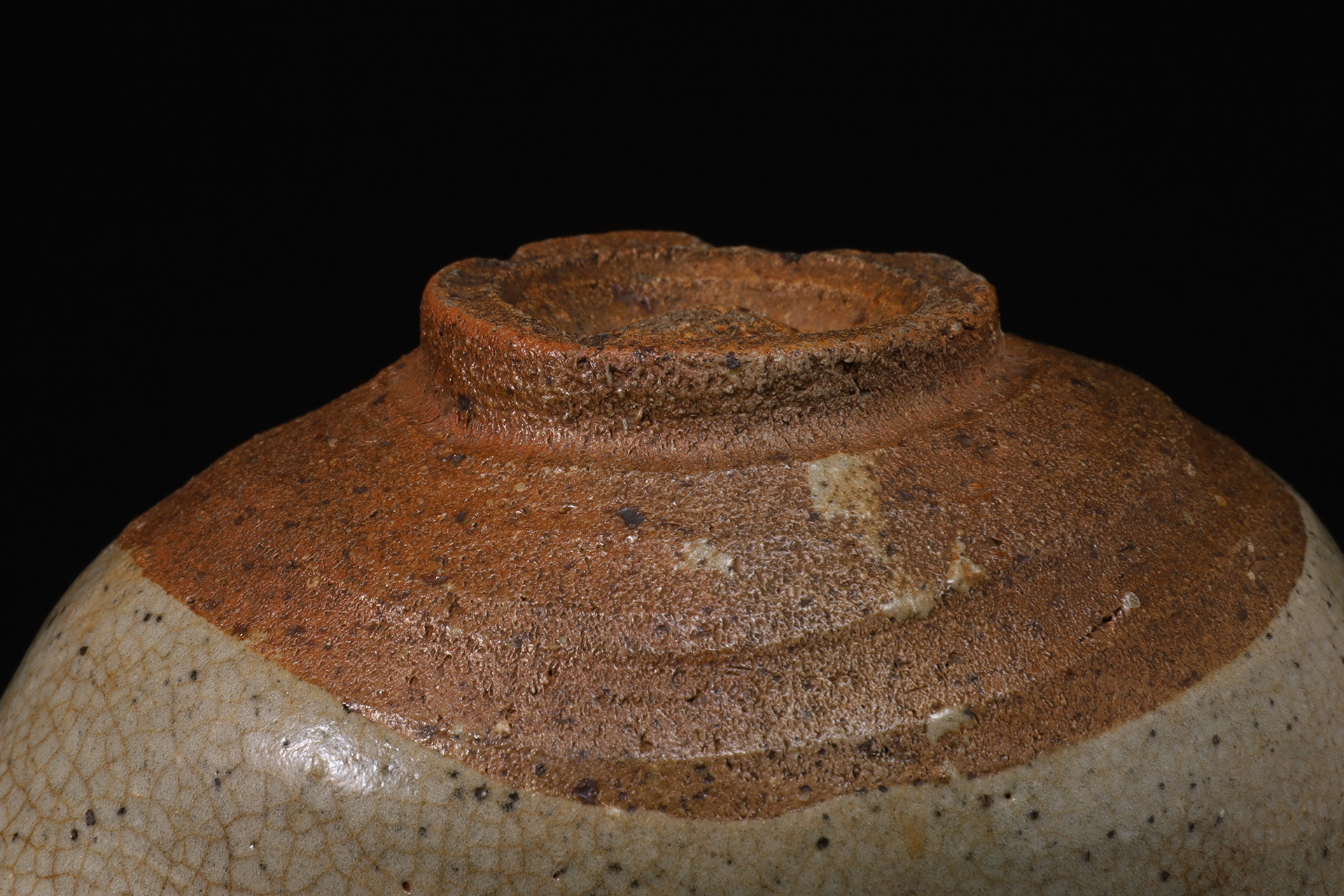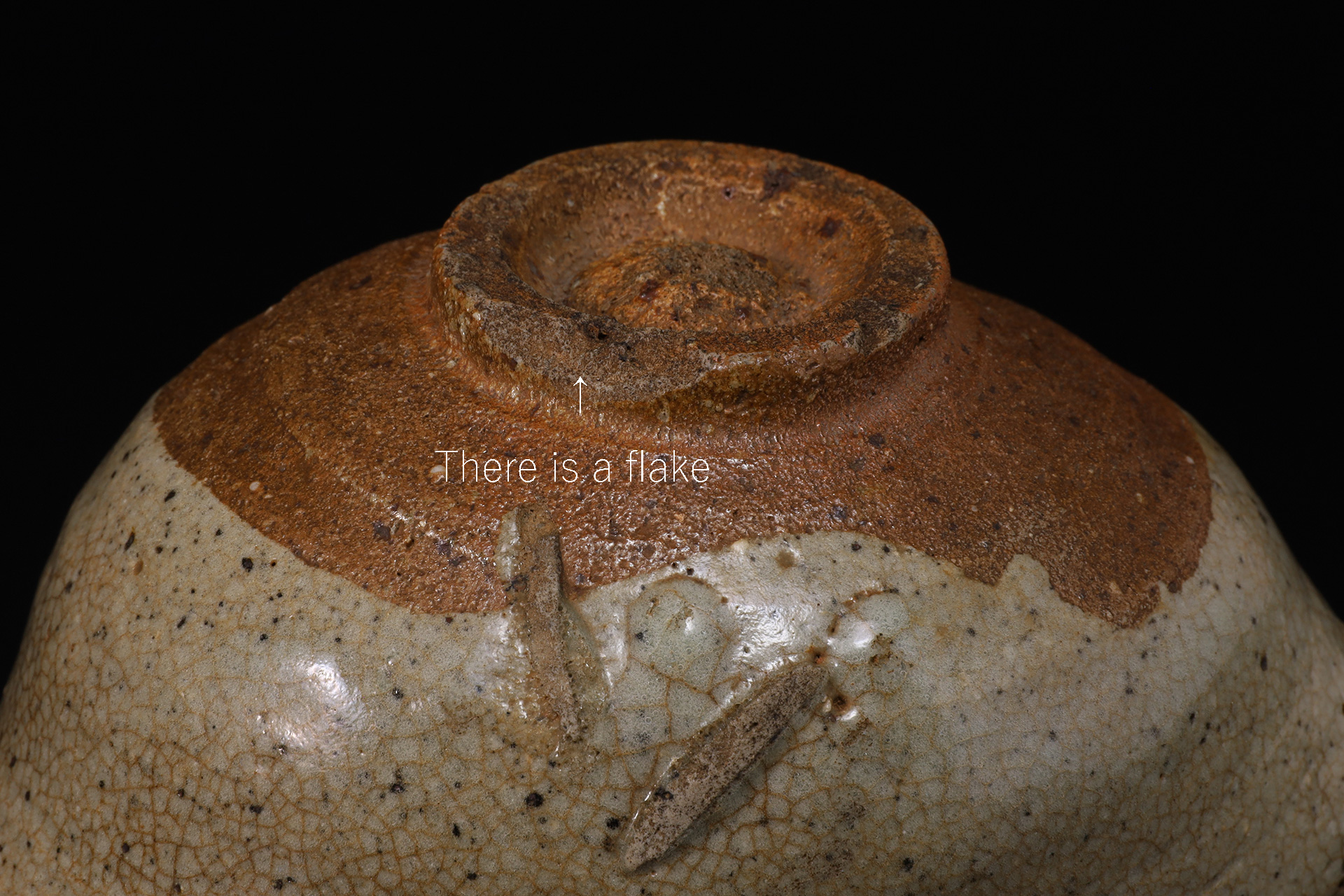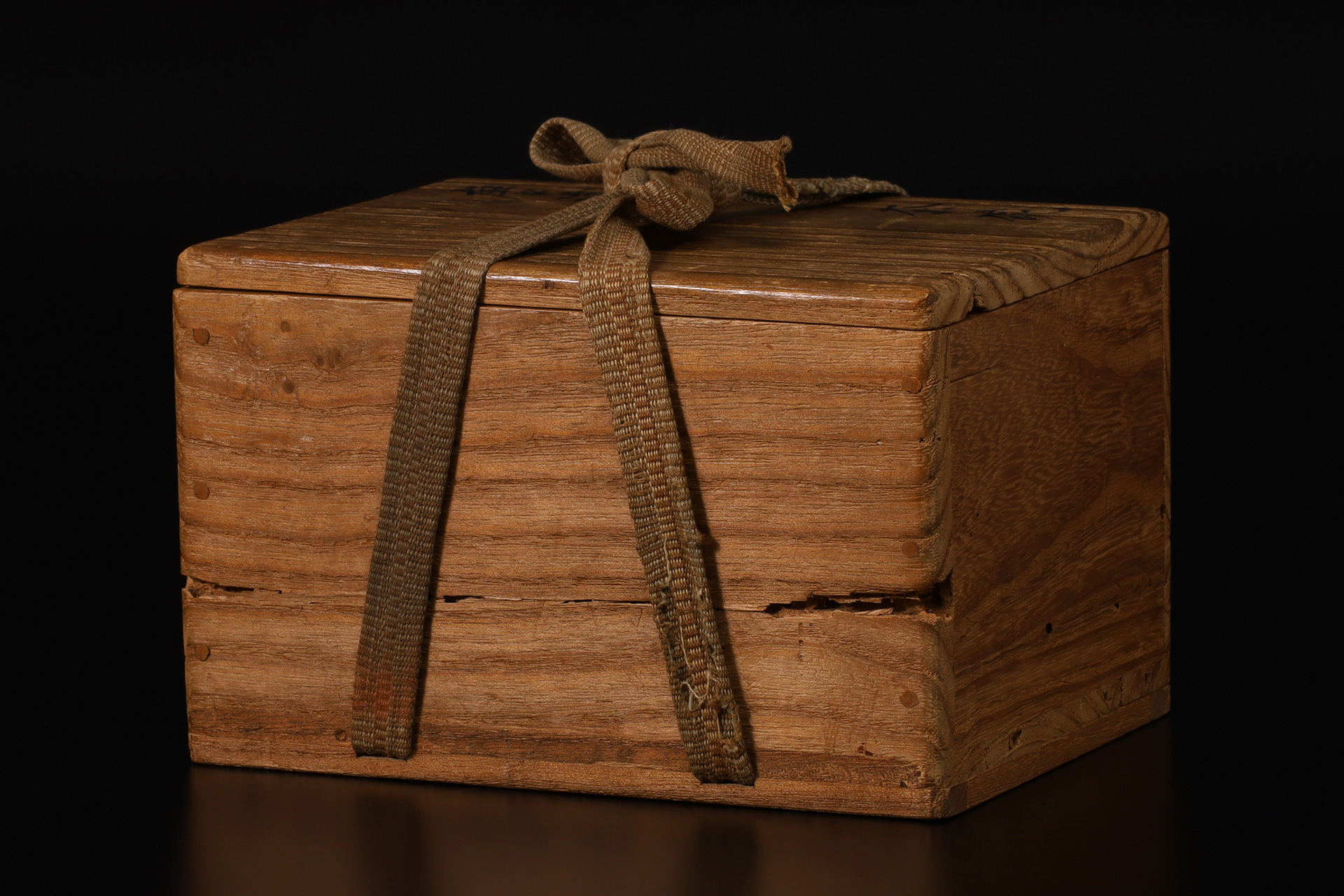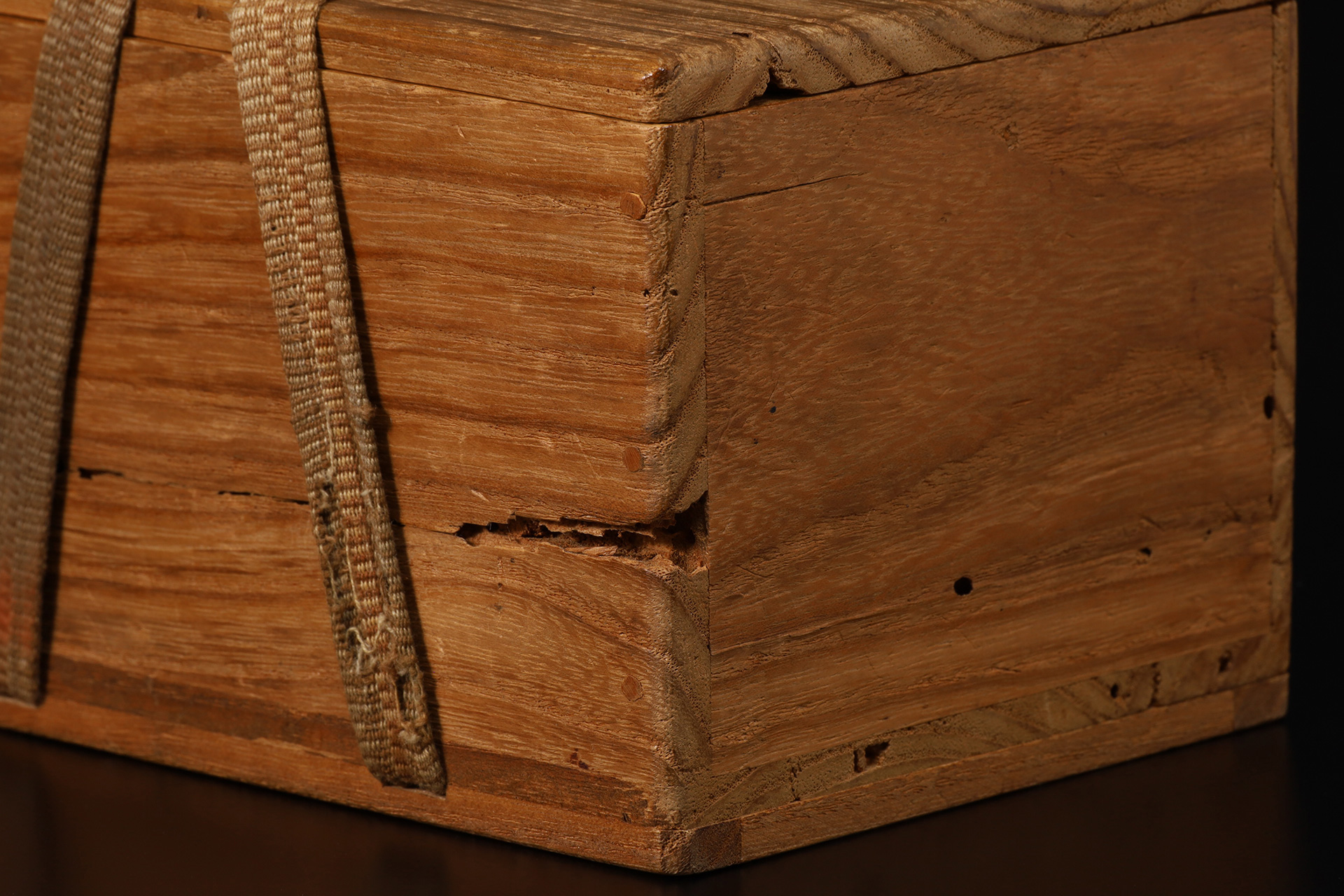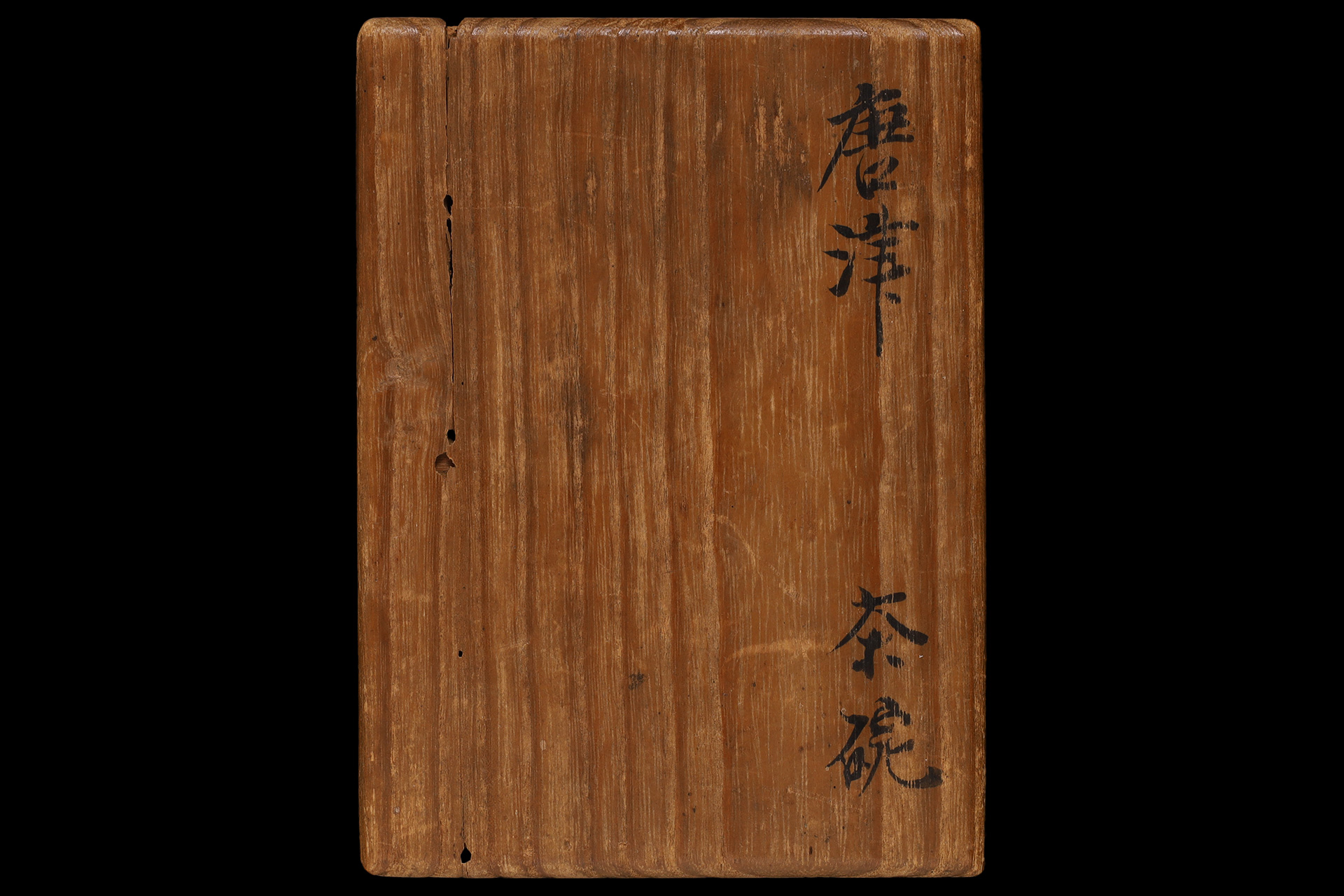This E-Karatsu tea bowl is quietly adorned with iron brushwork that drips gently from the rim, lending a subdued elegance to its presence. A kiln adhesion mark is visible near the lower body, and the vessel’s form—distorted during firing into a shape reminiscent of an overturned straw hat—embodies hacho no bi, the beauty of asymmetry and imperfection that characterizes old Karatsu ware. Through years of use, the surface has acquired a soft, lustrous patina, while the fine crazing of the feldspar glaze emerges as its most captivating feature. The green of the tea reflects with striking clarity, offering a moment of quiet color that enriches everyday life.
- Period
- Momoyama-Edo Period
End 16th Century-Early 17th Century
- Weight
- 240g
- Width×Depth
- 13.7×9.4cm
- Height
- 6.8cm
- Base Diameter
- 4.5cm
- Fittings
- Period Box (Paulownia Box)
- Condition
- There is one area of gold and silver repair along the rim, and a single chip on the footring
The tea bowl retains a bold, earthy texture and a lustrous, well-seasoned surface, reflecting years of careful use and preservation. Kiln adhesion marks are visible near the lower body, and the vessel’s form is gently distorted into a woven hat-like silhouette—a graceful asymmetry that adds to its rustic charm.

Ko-Karatsu
Karatsu ware refers to ceramics fired in the Hizen region, centered around the Karatsu Domain of Hizen Province. Its name derives from Karatsu Port, from which these wares were shipped. Highly esteemed as tea ceramics, Karatsu ware has long been cherished by tea practitioners, famously ranked as “First Raku, Second Hagi, Third Karatsu”. Its origins trace back to the late 16th century in the Kitahata area of present-day Karatsu City, Saga Prefecture. It is said that Hata Chikashi, Mikawa-no-kami, lord of Kishidake Castle, invited Korean potters to establish kilns. The castle town of Kishidake still bears traces of these early kiln sites, marking the foundational period of Karatsu ware. In 1593 (Bunroku 2), the Hata clan was dispossessed by Toyotomi Hideyoshi, leading to the dispersal of Kishidake potters across Hizen—a disruption known as the “Kishidake Collapse”. Subsequently, Terazawa Hirotaka, Shima-no-kami entered the domain, establishing the Karatsu Domain. This upheaval and the closure of kilns provide compelling evidence that Karatsu ware was already being produced prior to 1593, likely during the Tenshō era (1573–92). The arrival of Korean potters during the Bunroku and Keichō campaigns (1592–98) brought advanced techniques that ushered in a flourishing period for Karatsu ware from the Momoyama into the early Edo periods. During Hideyoshi’s encampment at Nagoya Castle, the tea master Furuta Oribe is said to have stayed for approximately a year and a half from 1592 (Bunroku 1), directly advising various Karatsu kilns. The chambered climbing kiln (renbō-shiki noborigama), too, was transmitted from Karatsu to Mino, where it was constructed at the Kujiri Motoyashiki site. The introduction of Korean ceramic techniques had a profound and lasting impact on Japanese kiln culture. The name “Karatsu ware” first appeared in the 1602 (Keichō 7) record of Oribe’s tea gatherings, listed as “Karatsu ware dish,” and is frequently mentioned throughout the Keichō era (1596–1615). By the middle 17th century, the term “Ko-Karatsu (Old Karatsu)” had emerged, indicating that its historical value was already being recognized. While much of Karatsu ware was produced in quantity for everyday use, the rise of powdered tea preparation during the Momoyama and early Edo periods brought these wares to the attention of tea masters, who began to select them as tea ceramics. Some works were even commissioned by tea practitioners, and their rarity has earned them high acclaim. In the 17th century, the discovery of Izumiyama porcelain stone and the successful firing of porcelain by the immigrant potter Yi Sam-pyeong (Japanese name: Kanagae Sanbei) marked a turning point for Karatsu ware. The rise of Imari ware led to its decline. Although distinctive styles such as Mishima Karatsu and Nisai Karatsu emerged in the early Edo period, they could not match the allure of Ko-Karatsu. Thereafter, only the official kilns (Goyōgama), such as the “tea bowl kiln,” remained in limited operation. In the early Shōwa period, researchers including Kanehara Tōhen (1897-1951), Mizumachi Wasaburō (1890-1979), and Furutachi Kuichi (1874-1949) advanced the study of Ko-Karatsu. Their excavations across the Hizen region uncovered tens of thousands of ceramic shards from ancient kiln sites.
